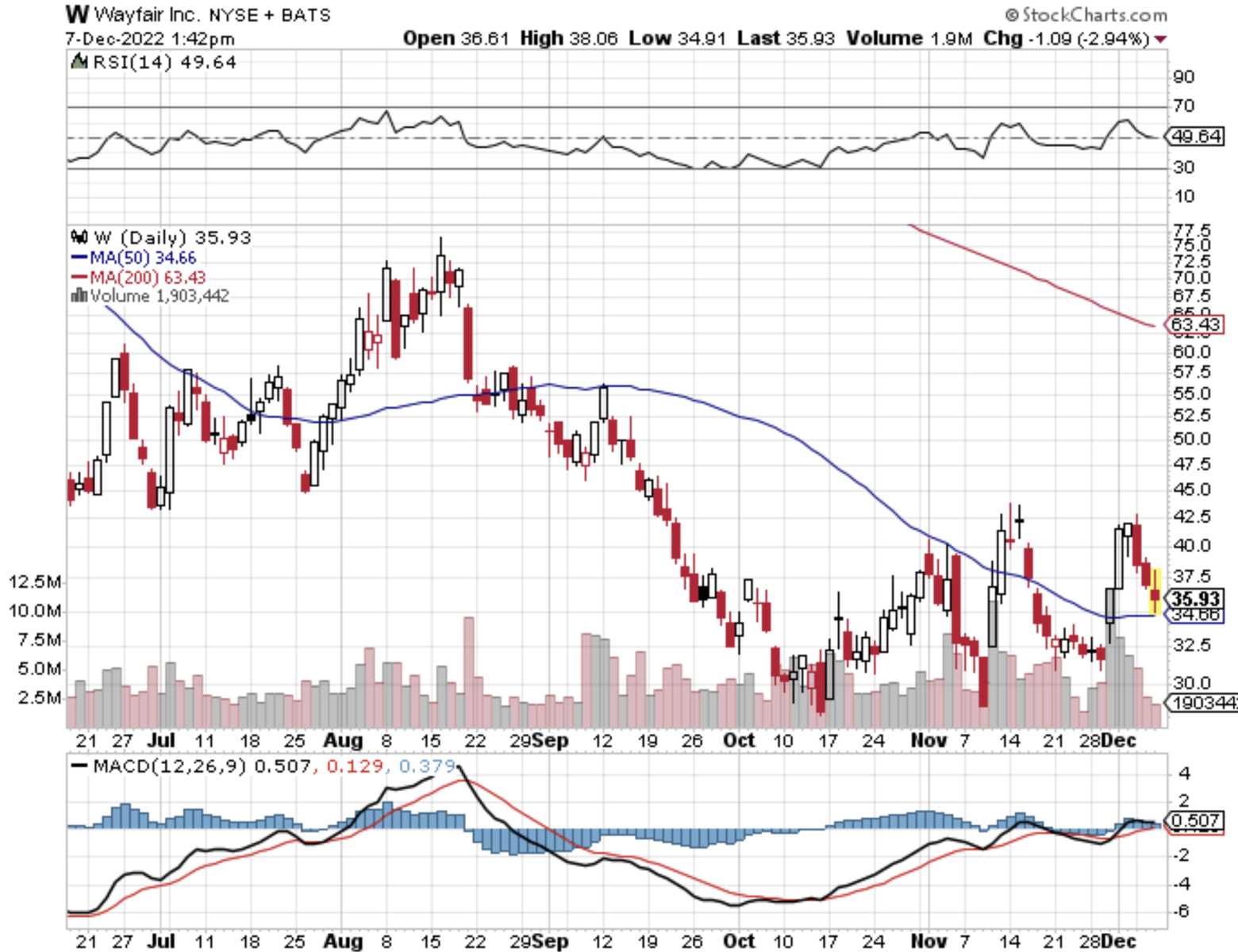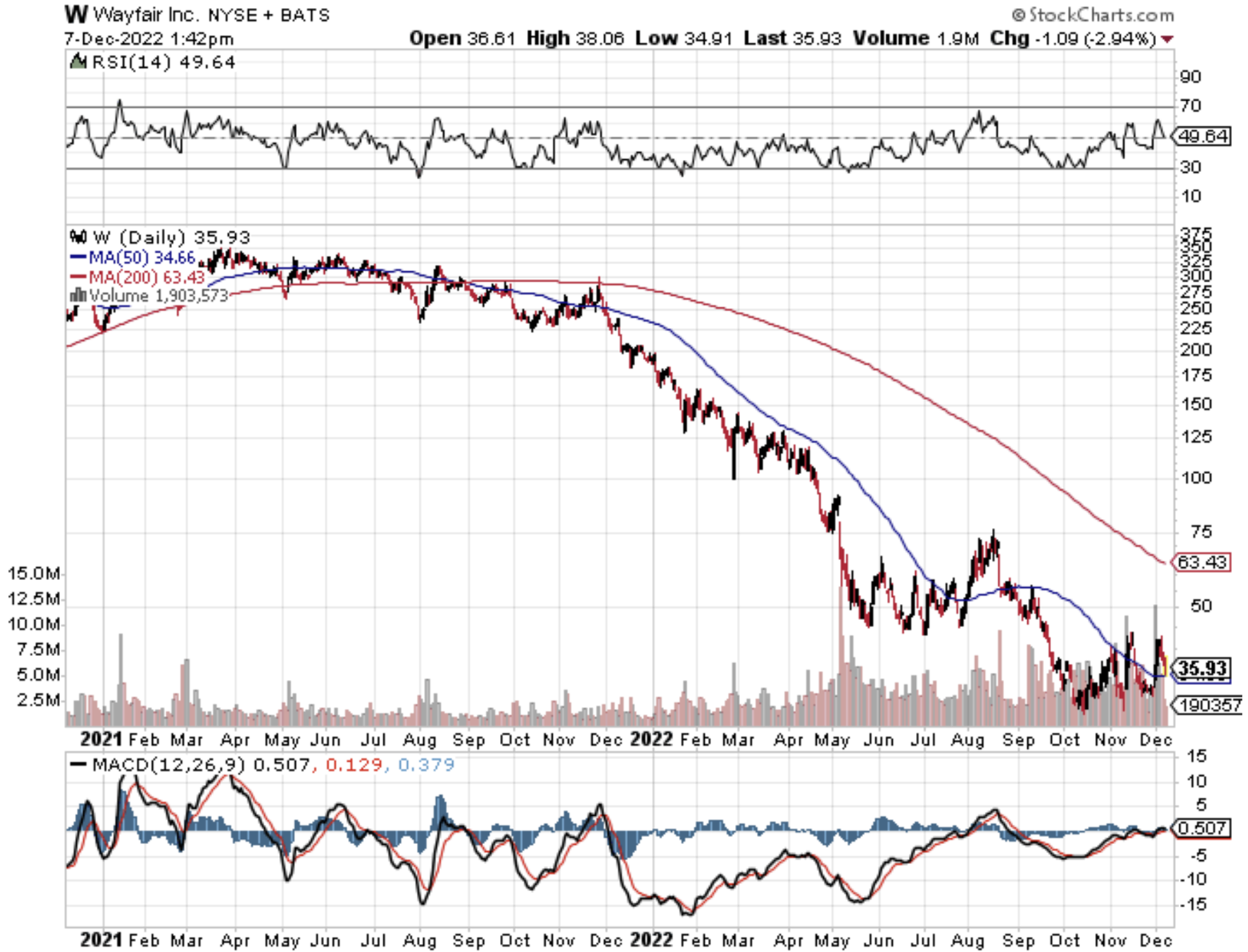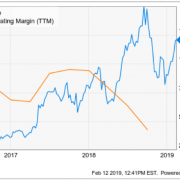As we gather up to steam to the December 13th CPI report, it is important to keep mindful of avoiding the tech traps out there.
Many tech companies are still worth their weight in gold but some aren’t.
The ones to ignore are specifically the zombie companies.
Low rates almost gave them a great excuse not to profit because back then, with low rates, they could just roll over debt and kick the can down the road.
Suddenly, in 2022, the unthinkable happened, and now profitability matters.
Zombie firms tapping debt markets can be a good thing, but doing so at elevated rates could topple their business model.
One company to stay vigilant about is digital furniture dealer Wayfair (W) whose business model and share price have been disproportionately damaged over the past year and a half.
Just take a look at W’s share price if you don’t believe me.
Shares of W were trading at $315 per share around June 2021 and fast forward to today and the same stock is $36.
I personally believe that it will be a tough slog moving forward for W and it is highly unlikely the easy conditions of 2021 will ever come back to anything similar.
W will inherently struggle to produce real cash flows which means that they are at risk of filing for bankruptcy.
Getting third parties to sell furniture for you and offering a website for that isn’t the greatest business model and they have been exposed.
In the current environment, investors are searching for real cash flows, strong balance sheets, shareholder returns, and sustainable profits.
W doesn’t check one box.
After the arbitrary lockdowns ceased, W’s business resumed burning cash.
W has burned through $4.1 billion in Free Cash Flow, excluding acquisitions, since 2013.
The burn rate is getting worse by the day because of the poor unit economics.
W burned through $1.3 billion in FCF excluding acquisitions over the trailing-twelve-months through the third quarter of 2022, compared to $214 million in the trailing 12 months through the third quarter of 2021.
In August, Wayfair announced plans to lay off about 870 employees, or about 5% of its global workforce.
However, the cost saving is more of a one-time boost to cash flow than anything long-term.
In general, since the last quarter of 2021, earnings per share losses have accelerated to the point where last quarter they delivered -$2.15 of earnings growth.
That was the worst profitability in the last 4 quarters.
Then there is the issue of inflation tearing apart American budgets.
When the cost of furniture was in demand during the government-mandated lockdowns, there was outsized demand for bespoke furniture because Americans spent all day at home.
Now, the cost of food and shelter has become so exorbitant that they are exerting maximum strain on middle class American budgets.
Amid this backdrop, there will be a longer lag until the beginning of a new furniture upgrade cycle.
Consumers were furniture-splurging during the arbitrary lockdowns and now they are splurging on food.
Food now trumps furniture.
I don’t believe this problem has a solution in the near term and any bounce in W shares will be a dead cat bounce.
If the cost of living crisis goes from bad to worse in 2023, then expect even less furniture bought from W.




